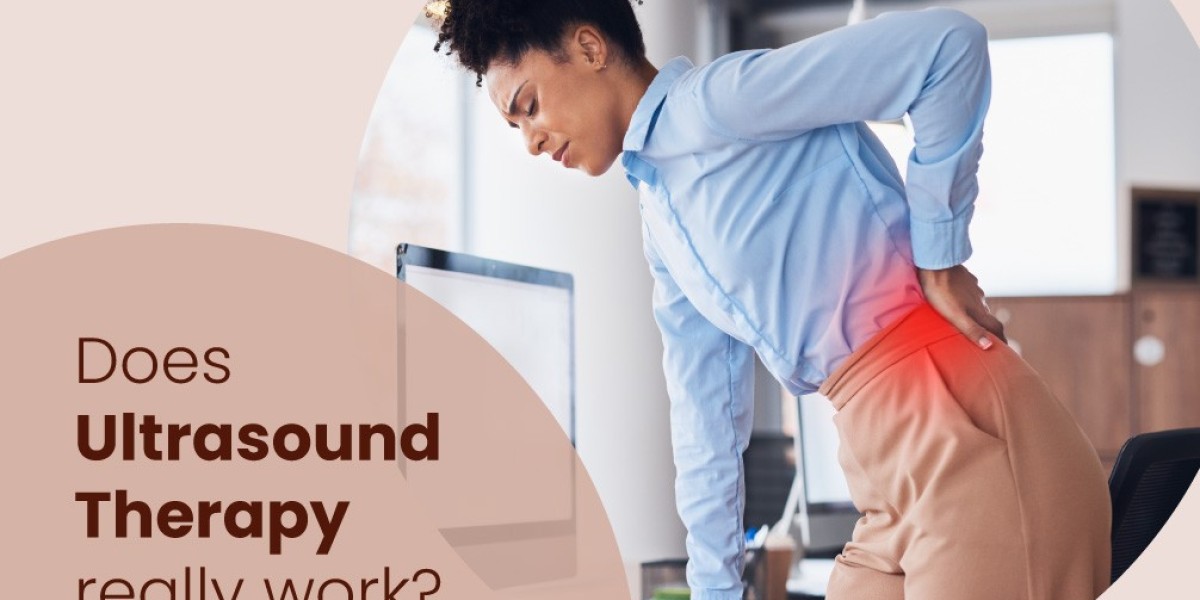In today’s vast world of medical treatments and advancements, ultrasound therapy as a form of physiotherapy sparks curiosity and skepticism, alike. As a therapy, ultrasound is always associated with the imaging technology used to peek inside a pregnant woman’s womb. However, ultrasound physiotherapy plays a different and diverse role altogether. A potential alleviator of pain, ultrasound therapy accelerates overall healing. A non-invasive alternative to multiple surgical procedures and medications, ultrasound therapy penetrates deep into the tissues to provide instant chronic pain relief.
But, the lingering question in the current status quo: Does ultrasound therapy really work?
In this blog, we will explore how ultrasound therapy works as a physiotherapy modality, shedding light on its importance for fighting various chronic/acute pain conditions. Further down the end of the blog, we will also introduce you to a portable ultrasound physiotherapy device for at-home and in-clinic use.
How does Ultrasound Therapy Work?
There lies widespread skepticism regarding the effectiveness of ultrasound therapy due to the non-invasive nature of the treatment. Many wonder: How does a seemingly large device, gliding over the affected area with the help of a gel deliver results without any sensation?
However, the reality behind the treatment mechanism of therapeutic ultrasound is unique and different from other pain management mechanisms.
Ultrasound therapy involves the use of high-frequency sound waves to penetrate deep into the tissues. Unlike diagnostic ultrasound, therapeutic ultrasound for pain management works on a different mechanism. Therapeutic ultrasound utilizes the heat generated by the vibrations of the sound waves to promote overall healing and alleviate pain.
The principle lies in the ability of the ultrasound waves to stimulate the tissues beneath the skin’s surface, increasing the blood flow to the affected area. As a result, the increased blood flow causes an increase in oxygen levels, essential for healing the damaged tissue.
What conditions can Ultrasound therapy treat?
There are several ailing conditions that ultrasound therapy can cure. The list can go endless, but in this blog, we will name the most common pain conditions treated by an ultrasound pain relief mechanism.
Chronic Muscle Pain
Ultrasound for muscle pain can help relax muscles, increase blood flow, and reduce inflammation. Reduced inflammation can alleviate deep muscle pain caused by strains, muscle overuse, or tension.
Joint Pain
Ultrasound therapy can be beneficial for managing pain in the joint areas, including the knee, shoulders, hips, and wrists. It is specifically said that ultrasound knee treatment is very helpful for treating knee joint problems like arthritis and osteoarthritis.
Tendonitis
Conditions like Achilles tendonitis, tennis elbow, or rotator cuff tendonitis involve heavy inflammation of the tendons. Therefore, ultrasonic massage therapy not only reduces inflammation but also heals the affected tendons.
Bursitis
Bursitis is the inflammation of the bursae, small sacs filled with fluid cushioning and lubricating joints. Ultrasound therapy helps in reducing inflammation and as a result, the pain associated with bursitis gets reduced.
Plantar Fasciitis
Plantar fasciitis is a common foot condition that involves the inflammation of the plantar fascia, a thick band of tissue that runs along the bottom of the foot. This condition generally leads to immense heel pain, especially while walking or standing. Ultrasound therapy penetrates the affected tissues and promotes blood flow to reduce inflammation.
Trapezitis
Trapezitis refers to inflammation of the trapezius muscle, leading to pain, stiffness, and reduced range of motion in the neck and upper back region. Ultrasound therapy promotes blood circulation, reduces inflammation, and relaxes muscle tension.
While ultrasound therapy stands as an effective method for alleviating specific pains, it also showcases a certain complexity. Traditionally only available in clinical settings, ultrasound therapy has now decided to enter the comfort of our homes. Are you wondering how?
Let us break it down for you.
US111: Ultrasound Therapy is Home!
One of the best-known innovations in medical science, US111 is a therapeutic ultrasound therapy device that is non-invasive. Completely portable in nature, US111 allows you to get instant relief from any kind of chronic muscle, joint, or nerve pain and is specially designed for at-home and in-clinic use.
The US111 physiotherapy device by UltraCare PRO is a smart-technology-enabled portable ultrasound therapy device generating pulsed and continuous 1 MHz frequency sound waves caused by the vibration of crystals within the head of the probe. These frequency sound waves penetrate the skin up to 1.6 inches (4 cm) into muscles and body tissues, causing heating that is not sensed by the patient. This heat generation increases the blood flow in the body, in turn increasing the levels of oxygen in the affected area, promoting effective healing.
A home ultrasound therapy device, US111, reduces swelling and inflammation, quickening the muscle healing procedure timely. Scientifically proven to be an excellent pain reliever, US 111 is used and approved by more than 2,00,000+ customers and multiple physiotherapists, and physical therapists.
US111 is a physiotherapy ultrasound device for pain relief that has 8 levels of intensity for maximum relief, a smart timer therapy, and a digital display for effortless use without the supervision of an expert.
In a nutshell…
Ultrasound therapy’s effectiveness may vary due to several factors including the condition being treated for, patient characteristics, and treatment parameters; it is highly effective in reducing pain and inflammation. With the ongoing advancements in technology and increased accessibility, ultrasound therapy has already entered the portability charts. Furthermore, it will also continue to evolve as a valuable tool in the management of pain and rehabilitation, reaching newer heights for ease of access.










